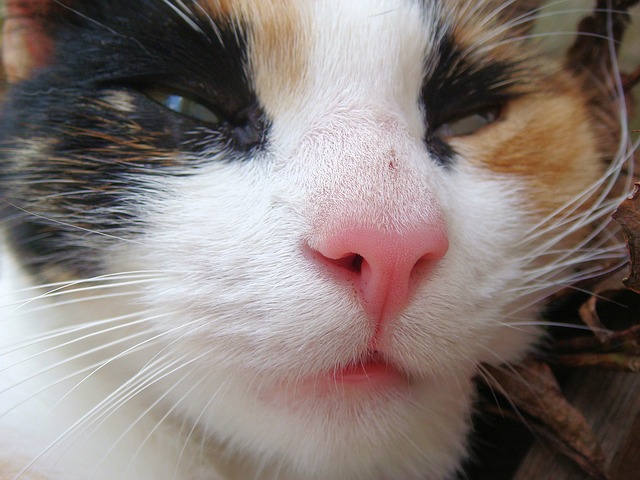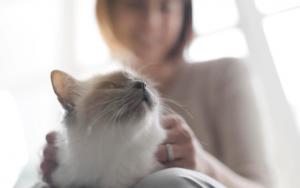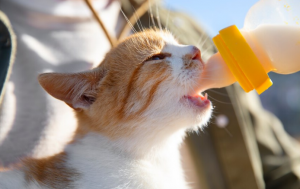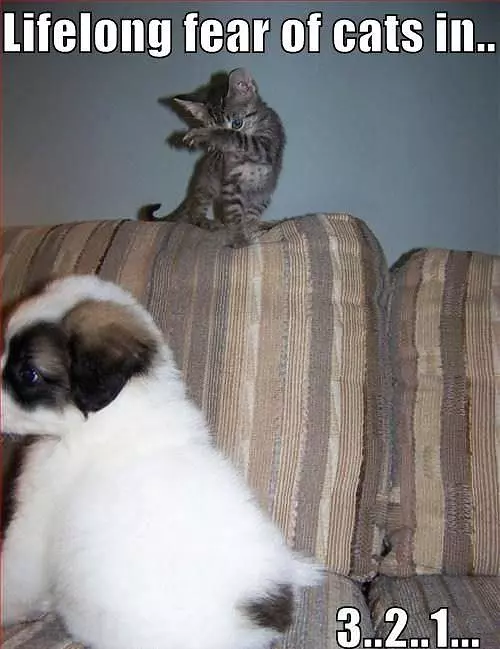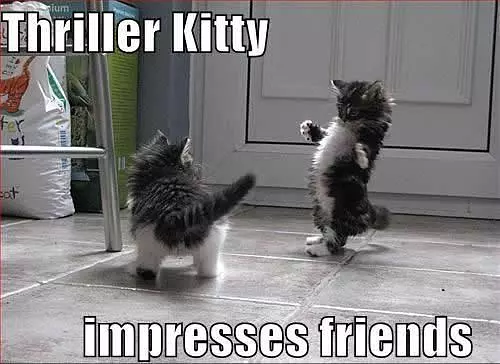Heavy breathing is something that you often see in dogs. Dogs typically pant when feeling stressed or when they are hot. However, this same kind of breathing isn’t as common in cats. If your cat is breathing heavily, then it could be a sign of a serious health problem. If you notice your cat has heavy breathing, then you should have them checked over by their vet as soon as possible.
What We'll Cover
Breathing issues in cats generally come from one of two areas of the respiratory system:
- The upper respiratory tract, which includes the cat’s nose and throat. Heavy breathing caused by the upper respiratory tract is usually noisy and caused by mucus or foreign objects caught in the airway. In rare cases, heavy breathing could be a sign that there are tumors growing in the nose or throat. Breathing issues in the upper respiratory tract are usually the same rate but louder. It can be like when humans have a cold and have to breathe through a clogged nose. If this is the case, you might notice your cat’s eyes are watery, too. These cases are usually minor, but you will still need to visit the vet to confirm the diagnosis and seek treatment.
- The lower respiratory tract, which includes their lungs and the area around their lungs. If your cat’s heavy breathing originates in the lower respiratory tract, then it may be a more serious problem. Breathing here could be more like a dog’s panting, which is quicker and more shallow than normal breathing. Or the breathing could seem labored and deep as if your cat is making a lot of effort to breathe in. Cats suffering from breathing problems in the lower respiratory tract may also situate themselves in unusual positions. This can help give their lungs more room to inflate thus reducing airflow restrictions. You may see them with their front legs held away from their bodies or with their necks stretched out.
There are a few warning signs that you should watch out for when your cat is breathing heavily. If you spot one or more of these signs, you’ll want to take them to the vet immediately.
- Biphasic breathing. This is when the cat’s chest will expand as they inhale, and then their stomach expands right after. This is a sign that your cat is trying to take in more air.
- Not wanting to move and getting aggressive if you try to make them move. This is a sign that your cat is concentrating all their energy on breathing.
- Not eating. Cats won’t eat if they are having trouble breathing. Not only do they not have the energy to eat, but the process of eating can restrict their airflow even further.
- Blue paw pads or lips. This is a sign that your cat’s oxygen levels are very low, and they need immediate veterinary attention.
In most cases, heavy breathing can be easily treated by a vet. However, you should contact them for an appointment right away regardless. Breathing issues that start out minor can become much more severe in a short amount of time.
How can I tell if my cat’s breathing is normal or not?
Your cat’s breathing can vary depending on their activity. Just like you, they will breathe heavier if they’ve recently been exercising. Once they rest, their breathing should return to a normal rate. You can check their breathing rate yourself at home to see if it’s within a normal range.
Grab a watch or set a timer on your phone for one minute. Then sit quietly with your cat and count how many breaths they take in that minute. This means a full breath in and a full breath out. A normal rate for cats should be around 30 breaths per minute when they are at rest. If they are purring or have recently had some exercise, your count may be inaccurate. However, if you count more than 40 breaths within that minute, then you’ll want to contact your vet.
Counting your cat’s breath when they are healthy can be very helpful, too. It can give you a good baseline of what is normal for your cat. Then you can easily compare that normal rate with a concerning one if they start to show signs of breathing trouble.
What could be causing my cat’s heavy breathing?
You’ll need to take your cat to their veterinarian for an accurate diagnosis regarding breathing issues in your cat. However, here are some common diagnoses depending on where the breathing issues originate:
- Upper respiratory tract causes: The most common cause of breathing issues in the upper respiratory tract is feline flu. This is a lot like a flu virus in humans and can cause blocked nasal passages, watery eyes, and fever. Other respiratory problems could be tumors in the nasal cavity or throat or dental hygiene issues.
- Lower respiratory tract causes: There are a variety of issues that can cause breathing issues in the lower respiratory tract. Issues here may be a sign of a more serious health problem. For example, heart disease can cause fluid buildup in the lungs. This will likely be the first thing that your vet checks for as it’s one of the more common causes of heavy breathing in cats. Lung tumors, asthma, and feline infectious peritonitis (FIP) are other potential concerns.
Your vet will need to perform a series of tests to determine the underlying cause of the breathing issues. These tests could include physical examinations, blood tests, and x-rays. Your vet will go over the tests with you before they begin so that you understand what’s happening to your cat every step of the way.
What should I do if my cat is breathing heavily?
If your cat is struggling to breathe, you’ll want to contact your vet right away. If it seems to be an upper respiratory issue (see the symptoms listed above), then ask for an appointment in the next day. If you suspect it’s a lower respiratory issue, though, treat it as an emergency and ask your vet to see your cat right away.
Tips for safely and comfortably getting your cat to the vet:
- Always use a carrier. Sick cats may be more skittish than usual and could be more likely to startle and run away from you. This is true even if they seem lethargic at home.
- Use the biggest carrier possible. This will allow your cat to stretch out to reduce airflow restriction. Cats with breathing issues do not want to be restricted.
- Keep your cat, yourself, and the environment around them calm and peaceful. Loud noises could add to your cat’s distress, so keep your cat in a quiet area when possible. Speak softly to them, but keep in mind they may not want you to pet them while they are trying to breathe. Try to keep yourself calm, too, as your cat can sense your stress.
If you have pet insurance, you’ll want to bring that information with you to the veterinarian’s office. Pack a small shirt that you’ve recently worn in with your cat, too. Smelling you may make them more comfortable and help them stay calm, especially if they have to spend the night at the vet’s office.
What will happen when I take my cat to the vet?
The first thing your veterinarian will do when you bring your cat into the office is to give them a thorough examination. Veterinary staff or your vet will get your cat’s health history and ask you questions about their recent behavior, including their diet, changes in their activity, and what’s been happening at home.
Next, the veterinarian will administer treatment depending on the severity of your cat’s breathing issue. Treatments could include:
- Oxygen to help them breathe and stabilize their systems
- Sedatives to help them stay calm
- Medications such as diuretics or anti-inflammatories for suspected underlying medical issues
- X-rays to see if there is anything blocking the airway, if there is fluid in the lungs, or if there are any tumors present
- Draining fluid from the lungs to ease breathing
- Surgery to remove tumors or repair damage to the lungs
Your vet’s top priority will be to discover the underlying cause of your cat’s breathing then treat it accordingly. Your cat may need to spend the night at the veterinarian’s office to give staff more time to perform tests and monitor their breathing. Your vet will keep you informed of test results and give you updates on your cat’s condition periodically if you need to leave your pet at the vet’s office.
It’s important to know that heaving breathing can be a sign of a serious medical issue for a cat. In most cases, though, your vet can treat the issue quickly and get your cat back home with you, happy and healthy. The sooner that you take action, though, the better off your cat will be. So at the first sign of breathing trouble, contact your vet. This can reduce the strain on your cat’s respiratory system and help them recover much sooner from breathing problems.
The responses below are not provided, commissioned, reviewed, approved, or otherwise endorsed by any financial entity or advertiser. It is not the advertiser’s responsibility to ensure all posts and/or questions are answered.
